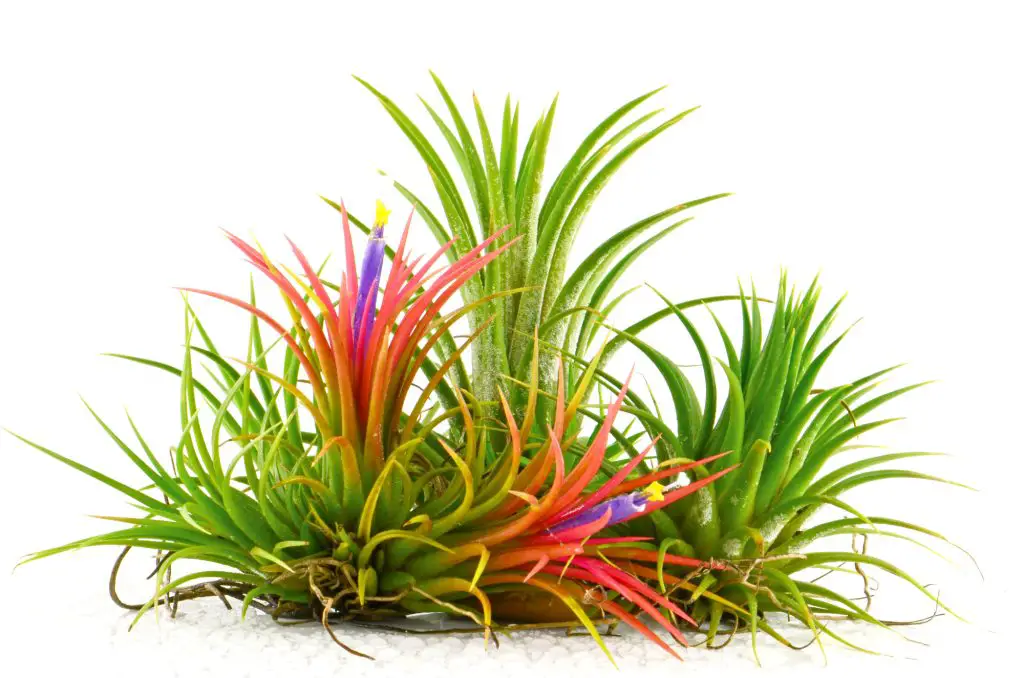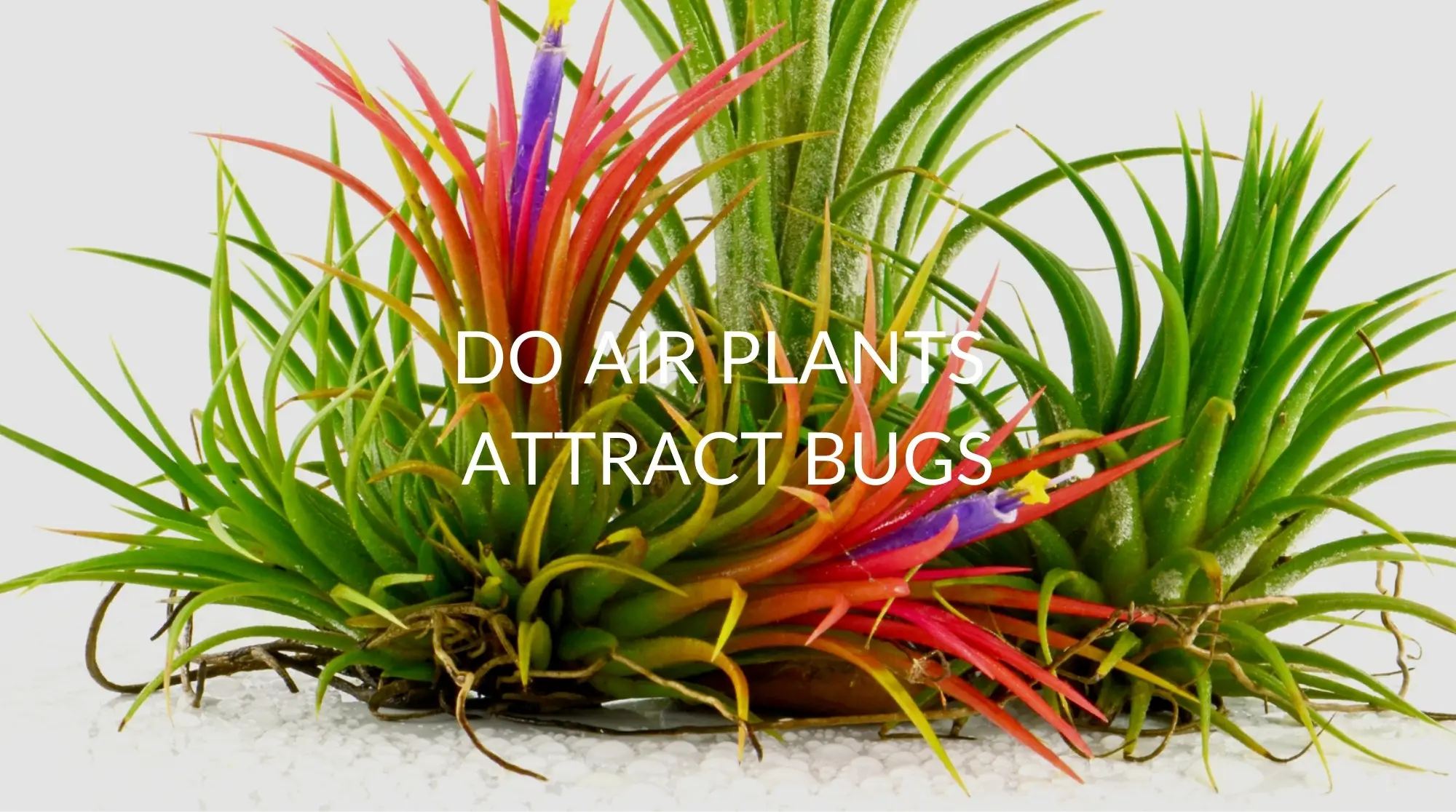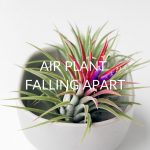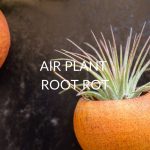Air plants can make a wonderful addition to any indoor plant collection. Like any plant, certain conditions like extreme wetness and negligence can impact how a plant responds to pests. Air plants are particularly vulnerable to mealybugs and scale insects. With proper care and preventive measures, plant parents can usually treat air plant pest infestation to keep the plant happy and healthy.
This article will discuss air plant pests, how to determine what kind of bugs infest air plants, best practices for treating air plant pests, and how simple treatments and preventative measures can help air plants thrive. Keep reading to learn more!
Do Indoor Plants Attract Insects?
Indoor plants can attract insects, especially if the plants are not well-maintained or monitored. High levels of humidity, overly damp conditions/soil, and inconsistent watering and fertilization can all impact the health of an indoor plant. Poor care can make an air plant especially vulnerable to an insect infestation.
Preventative measures, such as proper watering, maintaining good air circulation, and closely monitoring plants for poor health indicators are the most effective way to keep insects away from indoor plants.
Do Air Plants Attract Bugs?
Air plants can attract bugs if given improper care. Pests are mostly attracted to dying air plants. Insects are attracted to humidity and damp conditions, which can greatly impact air plant health. Damp air plants are especially susceptible to rot, which can also attract insects.
A dying air plant may have discolored or mushy leaves and shriveled roots. A sick air plant may also develop rot or fungal infection, which further inhibits the air plant’s ability to fend off pests.
What Kinds Of Bugs Might Be On Your Air Plants?
There most common bugs that infest air plants are mealybugs and scale insects, but there are many pests that can impact the health of an air plant.
Mealybugs
Mealybugs are tiny, white, and have slightly fuzzy bodies like lint. This pest can be difficult to treat when they have infested an air plant. Mealybugs do not have wings, and they attach to leaves with a wax coating. Mealybugs attack the air plant leaves to get to the “sap” inside.
Scale insects
Scale insects usually attach to the bottoms of leaves. These pests leave tiny shell-like bumps on the stems or leaves of the infected air plant. Scale insects can cause the leaves to become yellow and eventually fall apart.
Spider mites
Spider mites hide in the crevices between leaves, spinning webs and laying eggs. Spider mites reproduce very quickly. Spider mite infestations are diagnosed by damaged leaves and a web-like coating on the air plant’s leaves.
Earwigs
Earwigs can be difficult to find on an air plant. Earwigs love to snack on decaying plant material. They can be identified by leaf damage, excrement, and thick, white webs.
Chiggers
Chiggers are most commonly found on non-cultivated air plants that are kept outdoor or in their natural habitats. They are small red mites that cause itchy welts when they bite and embed themselves into the skin.
Aphids
Aphids are a common plant pest. These light green insects can travel and reproduce rapidly, meaning an infestation can get out of hand quickly. Aphids produce a substance called honeydew that attracts other insects, especially ants.
Ants
Ants do not damage air plants to the extent of mealybugs or other pests but should still be discouraged from occupying indoor plantings. Ants can invade air plants to feed on other insects, especially aphids and mealybugs. Some air plants have a symbiotic (beneficial) relationship with ants, so it is not uncommon to find ants crawling or nesting around wild air plants.

How To Treat Your Air Plants If They Get Bugs
Treating the air plants as soon as pests are discovered is vital to helping the air plant survive. For more severe infestations, use insecticide to kill the bugs. Sometimes, the damage is too severe, and the plant never recovers.
Preventative Care
Routine plant maintenance is a great preventative measure if insect infestation is a concern. Removing debris like dead leaves can increase air circulation. Routine checks of the growing medium, light levels, and humidity can prevent a lot of health problems for the air plant. Healthy air plants are naturally resistant to many pests. A sick or stressed air plant will have a much harder time fending off bugs and the damage they cause.
Water
For small infestations, water can be used to flush out any visible bugs. Move the plant to the sink and use the tap to rinse off whatever bugs are visible. You can also dunk or submerge the air plant in water to get rid of insects. Mild dish soap can also be used to gently clean the afflicted air plant.
Hand Removal
Most visible insects can be removed by hand. While this can be time-consuming, it is a good place to start when trying to eliminate an infestation. Most air plant pests can be removed by using a q-tip, soft bristle toothbrush, or scratching gently with a fingernail. A soft cloth can be used to clean the top and undersides of the leaves. A set of tweezers, gloves, and a magnifying glass may also be useful tools if removing insects by hand.
Wondering whether Air plants are dangerous to your cats?
Isopropyl Alcohol
Common household isopropyl or “rubbing” alcohol is an effective pesticide for a variety of plants. It is very effective at killing mealybugs and spider mites. Rubbing alcohol can also repel insects and is antifungal. Mix one part 70% rubbing alcohol with nine parts clean water and store it into a spray bottle.
Insecticide or Miticide
For persistent infestations, an insecticide may be necessary. Insecticides come in many varieties. Treatment can be customized depending on which pest is present and how severe the infestation is. Insecticide treatments should be repeated until the bugs are no longer present.
How Do I Get Rid Of Bugs In My Air Plants?
Once they have infested an air plant, getting rid of bugs can be frustrating; air plant pests can be stubborn, persistent, and resistant to some treatments.
Quarantine Affected Air Plant
An air plant with an insect infestation should be removed from other plants so that the insects do not spread to the other plants. The air plant should stay isolated until the infestation has been eliminated.
Insecticide or Miticide
Some air plant pests are stubborn and can be difficult to remove fully. In that case, an insecticide may be necessary, perhaps even multiple treatments. There are several options on the market. It is important to follow directions and dilution ratios carefully. It may be beneficial to treat all of your plants to avoid multiple infestations.
How To Protect Air Plants From Bugs
Keep Air Plants Inside
Air plants have adapted to a variety of climates and can be successfully grown both indoors and outside. However, air plants grown outside will be difficult to keep pest-free. Outdoor air plants are especially vulnerable to aphids and chiggers.
Do Not Overwater
Overwatering is usually one of the biggest reasons for pest infestation. Not only is the humid environment perfect for bugs, the constantly damp soil and standing water can create fungal infections and rot.
Grow Air Plants in the Correct Growing Conditions
Air plants are epiphytes, which means their roots are not a vehicle for nutrients but rather a mechanism for climbing and anchoring onto trees in their natural habitat. Air plants do not require planting in soil. They require bright, indirect light.
Perform Routine Maintenance
Keeping your air plant tidy and free from dead leaves will improve air circulation. Mushy, yellow, curled, brown, or other damaged leaves, roots, or flowers should be promptly and carefully. Monitoring conditions such as humidity, light, and water can inform what location helps the air plant thrive best.
Insect Traps for Indoor Plants
Insect traps are available commercially. They are usually comprised of plastic stakes with a sticky coating on them to trap gnats or other small flying pests.
Use Natural Pest Control
Natural pest control for air plants is possible. This usually comes in the form of using predatory insects that are benign or even beneficial to air plant health. Ladybugs are natural enemies of mealybugs and scales. There are even tiny black ladybugs known as “mealybug destroyers,” and they are a great option for biological pest control. Other insects that can protect air plants from a damaging infestation include pirate bugs and green lacewing larvae.
Recap
Air plants are low maintenance and fascinating plants at home in a variety of climates. They make great indoor and outdoor plants. Routine care and maintenance are the most important aspect of preventing insect infestation in air plants. Air plant pests thrive in damp conditions and can be more attracted to sick or rotting air plants. However, with solutions like rinsing, using insecticide, and more natural pest management techniques, air plant enthusiasts, can treat destructive bug populations and fully enjoy the unique growing experience of an air plant. Making sure your air plant is healthy means a bug infestation is less likely.








